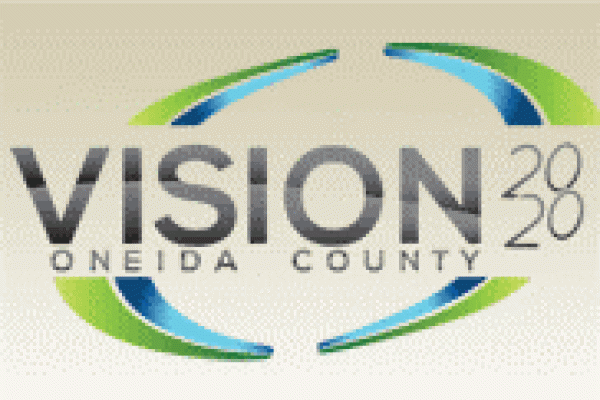July 18, 2016
Oneida County Builds Pathway to Prosperity with Vision 2020

Annual Report Details 2015 Progress, Achievements
Oneida County Executive Anthony J. Picente Jr. has released a progress report detailing the accomplishments of the Vision 2020 initiative to date and action items for 2016.
Vision 2020 is a collaborative, multi-phased effort to ensure that Oneida County is ready to meet the demands of new economic growth opportunities. This initiative has brought together community leaders in education, workforce development, and industry to develop a plan that will propel our region’s high-tech economy into the future.
“Thanks to the leadership of County Executive Picente and the dedication of our committee volunteers, we’re ready to embrace change and collectively obtain our prosperous future,” said Vision 2020 Co-chair Randy VanWagoner, President, Mohawk Valley Community College.
County Executive Picente said, “As Phase One implementation continues to make great progress in education and training, access to opportunity and housing, we have expanded our sights and launched Phase Two, which is focused on developing solutions to our transportation needs. Our transportation amenities will consider the needs of everyone, from the new millennial workforce to senior citizens, and those who desire or need alternatives to traditional auto travel to move about the county.”
Phase I progress highlights include:
- Adoption of tax incentives (485a) that have spurred the development of lofts and other mixed-use projects and supported neighborhood revitalization efforts throughout Oneida County.
- Expansion of college dual credit offerings in high schools and the development of multiple career pathways to incorporate current and new career clusters
- An 80% increase to more than 1,000 internships offering real-world learning experiences for students, up in 2015 from the previous school year
- Better alignment of English as a Second Language (ESL) programs with the needs of our English language learners, including expansion of the APPLE model, an alternative high school program for 17-18 year-old students to learn the language, graduate, and get a job or go to college.
“Over the past year, Vision 2020 has seamlessly worked to address the needs of industry, while ensuring that all citizens of Oneida County and beyond will benefit from economic growth,” said Vision 2020 Co-chair Dave Mathis, Director of Workforce Development, Oneida County.
Divided into three committees, the goal of Phase Two is to improve and expand the county’s transportation network:
- Chaired by Paul Romano, Project Manager at O’Brien & Gere, the goal of the Connectivity committee is to identify how Oneida County’s existing infrastructure might be enhanced to better meet the current and future transportation needs of residents and travelers.
- Chaired by Bethan Maher, Executive Director of the Adirondack Scenic Railroad, the Alternatives to Automobiles committee is focused on providing diverse and enhanced transportation modes to meet the needs of the expanding community and workforce.
- Chaired by Debra Altdoerffer, Vice President of Communications and Development for Mohawk Valley Health System, the Accessibility committee is focused on ensuring the availability of consistent and reliable means of transportation for all residents and employees within Oneida County.
For more information and to view the full report, visit vision2020oc.net.









